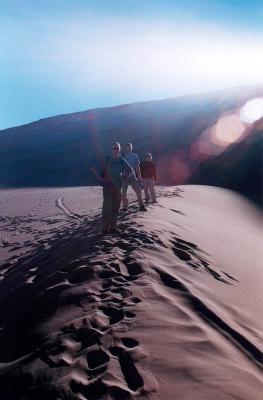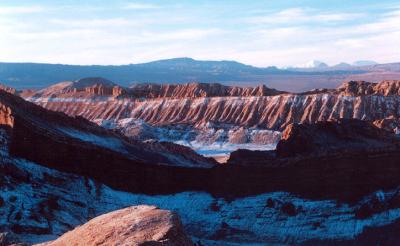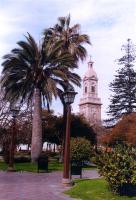|
|
|
Valle de La Luna
We spent 4 days in San Pedro. Time enough to see the main sights in the
area. One of the things I couldn't photograph though was the stars at night. We
wandered out of town one evening and spent some time star gazing. We had great
views of the Milky Way, rarely seen in Europe, with all our bright lights. But
it was wonderful to see the Southern Cross and the Magelanic Clouds, which are
not visible at all from the Northern Hemisphere.
On one of our first days we went out to see the Valle de La Luna, the Valley of
the Moon, and to watch the desert sunset.
 |
The Valle de La Luna is an area of dozens of square kilometres of broken ground
outside San Pedro. A long time ago it would have formed the coast line of the
inland sea that was lifted and evaporated to form the Salar de Atacama. Now it
looks desolate, with baked rocks, sand dunes and little plant life.
|
|
We spent a few hours walking around this strange landscape. As Donogh is
demonstrating, you got great views from the top of the dunes.
|
 |
 |
The dunes were large enough that people were "sand boarding" down them. We were
happy just to walk. I was still getting Chilean sand out of my shoes weeks later
when I was back in Ireland.
|
|
We could see that much of the ground was covered in a white material that looked
like snow from a distance. Up close you could see it was salt. It had rained
a few weeks before and the salt in the ground (all that remains of the ancient
sea) was dissolved and then left behind when the rain water evaporated.
|
 |
 |
As the sun went down we looked east to watch the volcanos on the Chile-Bolivia
border turn an ominous flaming red.
|
|
|




 Location:
Entry Page
-
Pictures
-
Chile 2001
|
Location:
Entry Page
-
Pictures
-
Chile 2001
|